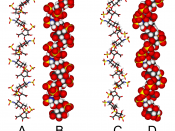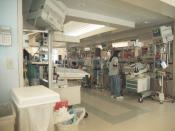The delivery of healthcare is complex, and becomes more complex each day. Patients's deserve and expect safe, quality care. The S.T.A.B.L.E. Manual (2005) quotes the Institute of Medicine (2003) in describing patient safety as "freedom from accidental injury." Medical errors can and do happen from all processes in the delivery of care, some of these errors result in patient injury or death. The difficulty comes when trying to quantify fully the extent of the problem as many errors are never caught or reported.
To err is human, and often a necessary condition for progress. Making mistakes provides an opportunity for learning, so the same mistakes will not have to happen again. Hospital risk management is used to help with continuous quality management, to minimize the risks and errors to patients.
Because of vulnerability and fragility premature infants' are at a higher risk for clinical errors. Bridge (2007) noted that The Department of Health reported "medication errors in particular account for 10 - 20% of all adverse events leading to injury or loss of life."Heparin
Use in Neonatal Intensive Care Unit (NICU)The exact number of medication errors in the NICU is not known, but errors do occur frequently. This is in part due to the complexity of medications used in the NICU, the high frequency at which premature infants are exposed and the potential for serious consequences from even the smallest of errors in this very vulnerable population. With this combination, medication safety is a high priority (Chedoe et al, 2007). Education on medication administration starts with the 5 R's, right patient, right drug, right dose, right route, and right frequency. Even with these rights in mind, the rights are not inclusive of all the major sources of error.
Because of the small bore catheters used in the NICU, heparin is...


